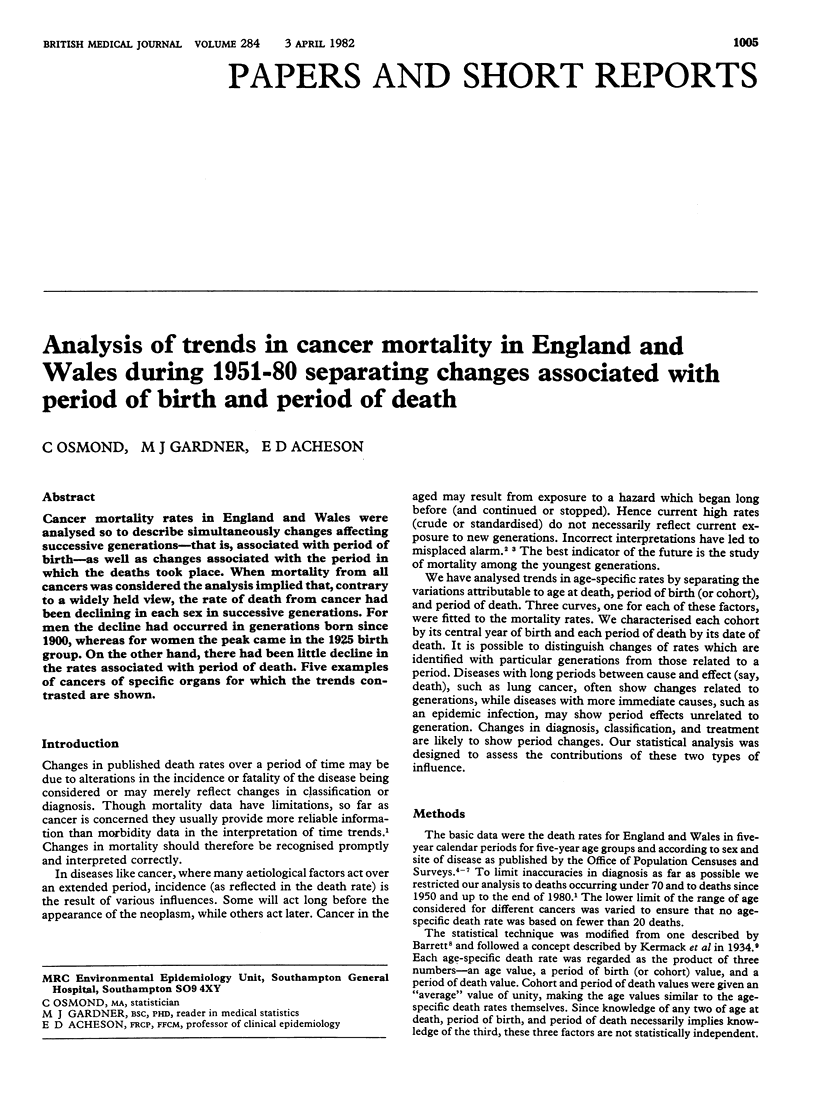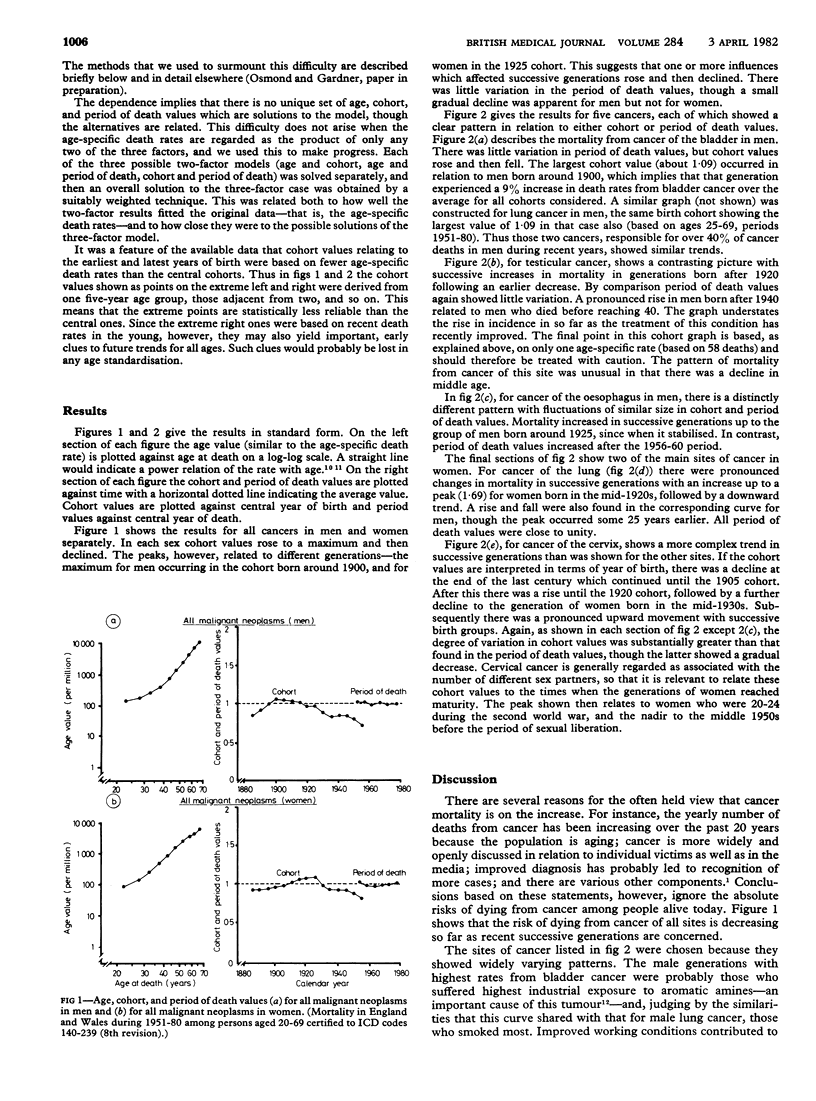Abstract
Cancer mortality rates in England and Wales were analysed so to describe simultaneously changes affecting successive generations--that is, associated with period of birth--as well as changes associated with the period of which the deaths took place. When mortality from all cancers was considered the analysis implied that, contrary to a widely held view, the rate of death from cancer had been declining in each sex in successive generations. For men the decline had occurred in generations born since 1900, whereas for women the peak came in the 1925 birth group. On the other hand, there had been little decline in the rates associated with period of death. Five examples of cancers of specific organs for which the trends contrasted are shown.
Full text
PDF



Selected References
These references are in PubMed. This may not be the complete list of references from this article.
- Barrett J. C. Age, time and cohort factors in mortality from cancer of the cervix. J Hyg (Lond) 1973 Jun;71(2):253–259. doi: 10.1017/s0022172400022725. [DOI] [PMC free article] [PubMed] [Google Scholar]
- Beral V. Cancer of the cervix: a sexually transmitted infection? Lancet. 1974 May 25;1(7865):1037–1040. doi: 10.1016/s0140-6736(74)90432-2. [DOI] [PubMed] [Google Scholar]
- CASE R. A., HOSKER M. E., McDONALD D. B., PEARSON J. T. Tumours of the urinary bladder in workmen engaged in the manufacture and use of certain dyestuff intermediates in the British chemical industry. I. The role of aniline, benzidine, alpha-naphthylamine, and beta-naphthylamine. Br J Ind Med. 1954 Apr;11(2):75–104. doi: 10.1136/oem.11.2.75. [DOI] [PMC free article] [PubMed] [Google Scholar]
- Chilvers C., Fraser P., Beral V. Alcohol and oesophageal cancer: an assessment of the evidence from routinely collected data. J Epidemiol Community Health. 1979 Jun;33(2):127–133. doi: 10.1136/jech.33.2.127. [DOI] [PMC free article] [PubMed] [Google Scholar]
- Davies J. M. Testicular cancer in England and Wales: some epidemiological aspects. Lancet. 1981 Apr 25;1(8226):928–932. doi: 10.1016/s0140-6736(81)91625-1. [DOI] [PubMed] [Google Scholar]
- Doll R., Peto R. The causes of cancer: quantitative estimates of avoidable risks of cancer in the United States today. J Natl Cancer Inst. 1981 Jun;66(6):1191–1308. [PubMed] [Google Scholar]
- Epstein S. S., Swartz J. B. Fallacies of lifestyle cancer theories. Nature. 1981 Jan 15;289(5794):127–130. doi: 10.1038/289127a0. [DOI] [PubMed] [Google Scholar]
- NORDLING C. O. A new theory on cancer-inducing mechanism. Br J Cancer. 1953 Mar;7(1):68–72. doi: 10.1038/bjc.1953.8. [DOI] [PMC free article] [PubMed] [Google Scholar]
- Peto R. Distorting the epidemiology of cancer: the need for a more balanced overview. Nature. 1980 Mar 27;284(5754):297–300. doi: 10.1038/284297a0. [DOI] [PubMed] [Google Scholar]
- Wald N., Doll R., Copeland G. Trends in tar, nicotine, and carbon monoxide yields of UK cigarettes manufactured since 1934. Br Med J (Clin Res Ed) 1981 Mar 7;282(6266):763–765. doi: 10.1136/bmj.282.6266.763. [DOI] [PMC free article] [PubMed] [Google Scholar]


